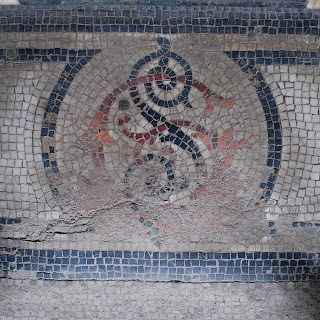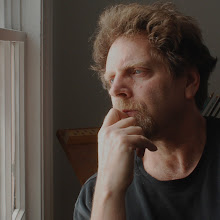


Of the several worn poems in the pockets of my itinerant youth, one read like an Episcopalian invocation not so much of heaven as of an ancient, gilded utopia with its own trades of holiness. It is called Sailing to Byzantium, by William Butler Yeats. I still love it, and I read it whenever I need to be reminded, in the gloom, of art's clapping and golden rejuvenations.
The great art of Byzantium, of course, was the art of mosaic--O sages standing in the holy fire, As in the gold mosaic of a wall. But more of Byzantine mosaics when we get to Italy. These mosaics on the floor of the arcades of the Palais Royal, too, walked upon, usually ignored (as floors tend to be), tattered in spots, are strikingly beautiful if you pause to look.
All of which raises the question in my mind: why is mosaic-making extinct? It seems perfectly suited to the modern imagination with its primitive and fragmentary images. Think of Basquiat set to mosaics.
In this case design is well ahead of the fine arts. Dutch designer Marcel Wanders and Spanish designer Jaime Hayon, (one from his series of monumental vases above), both working for Bisazza, are giving the ancient art a modern twist.


















